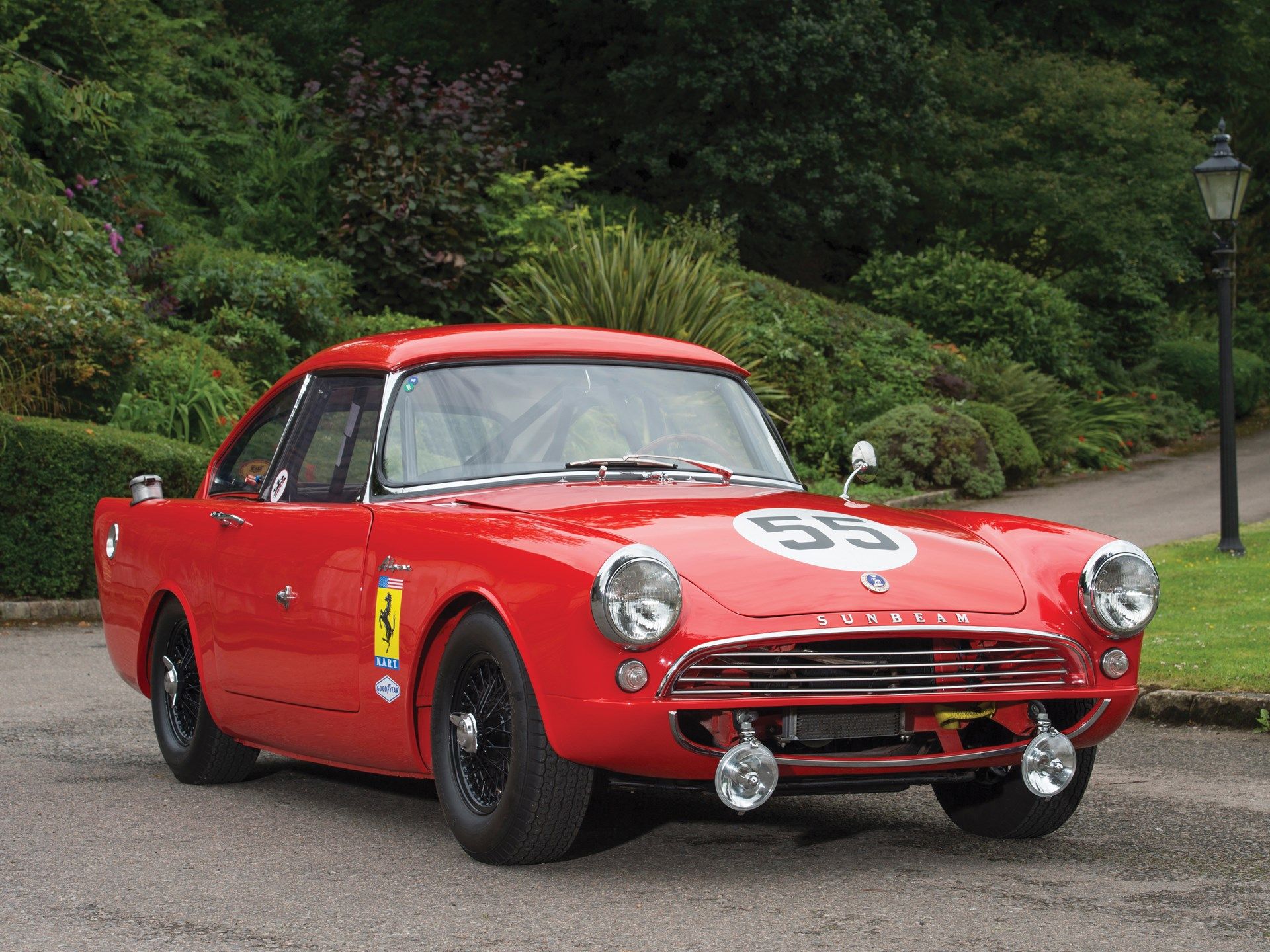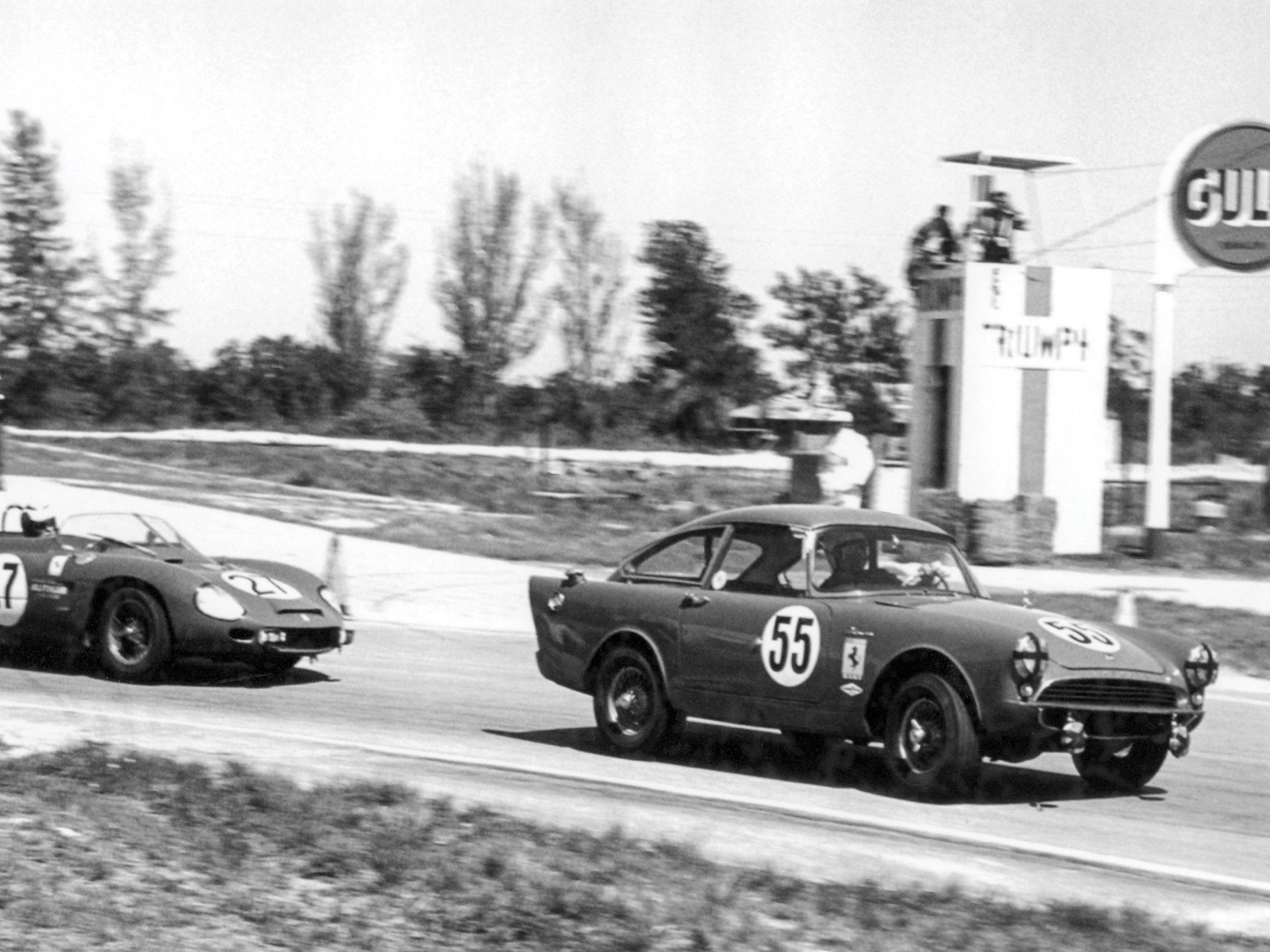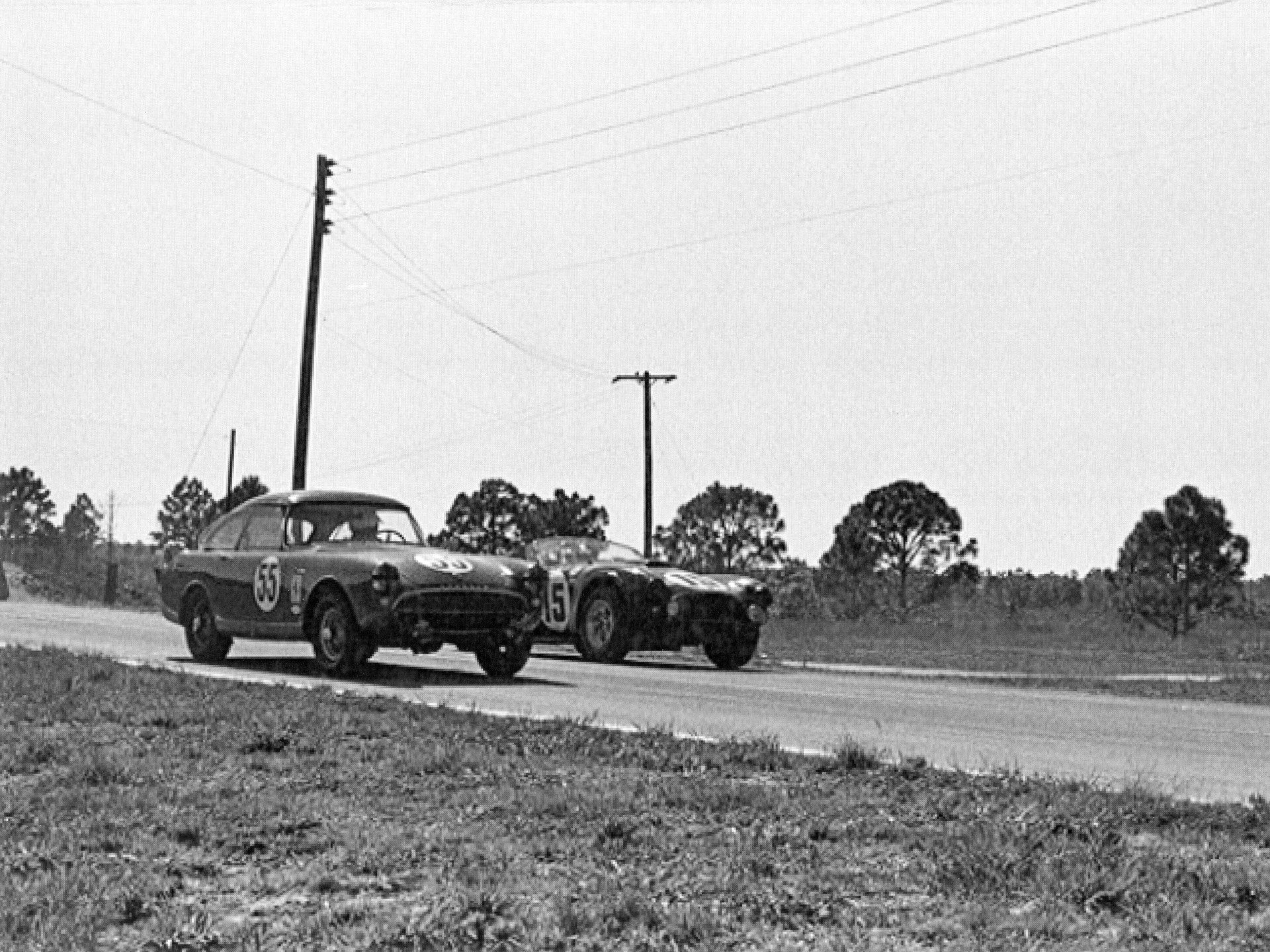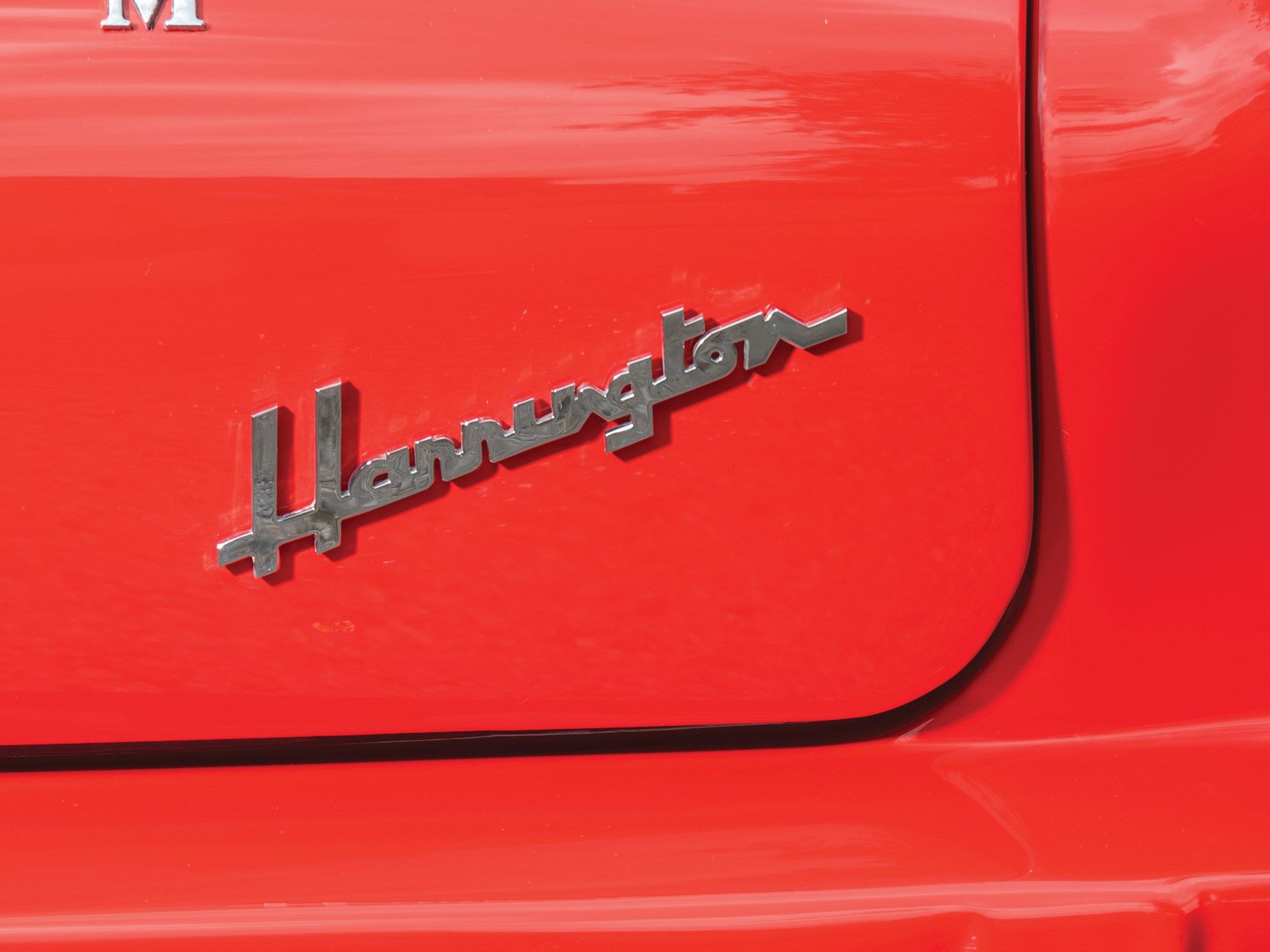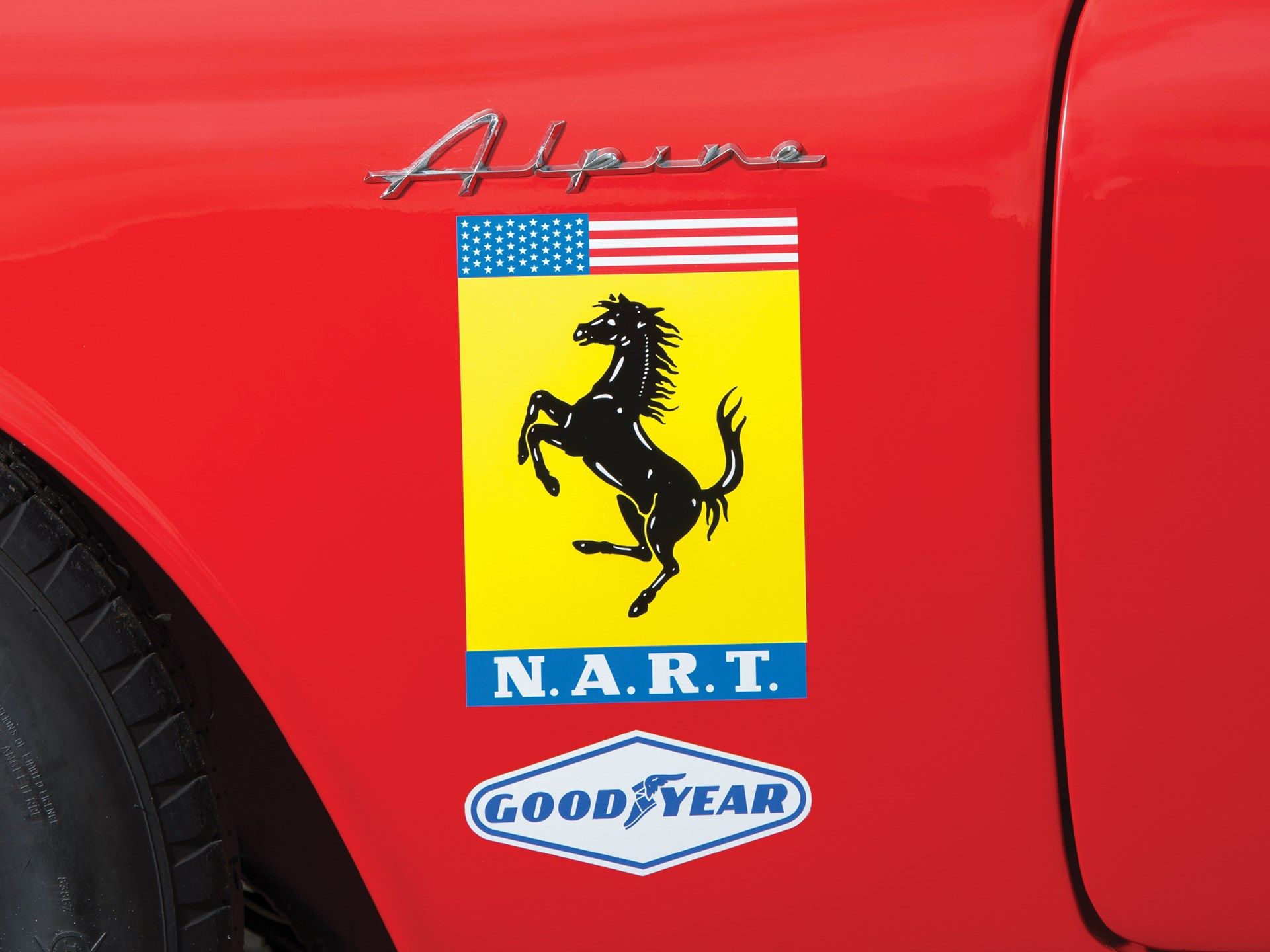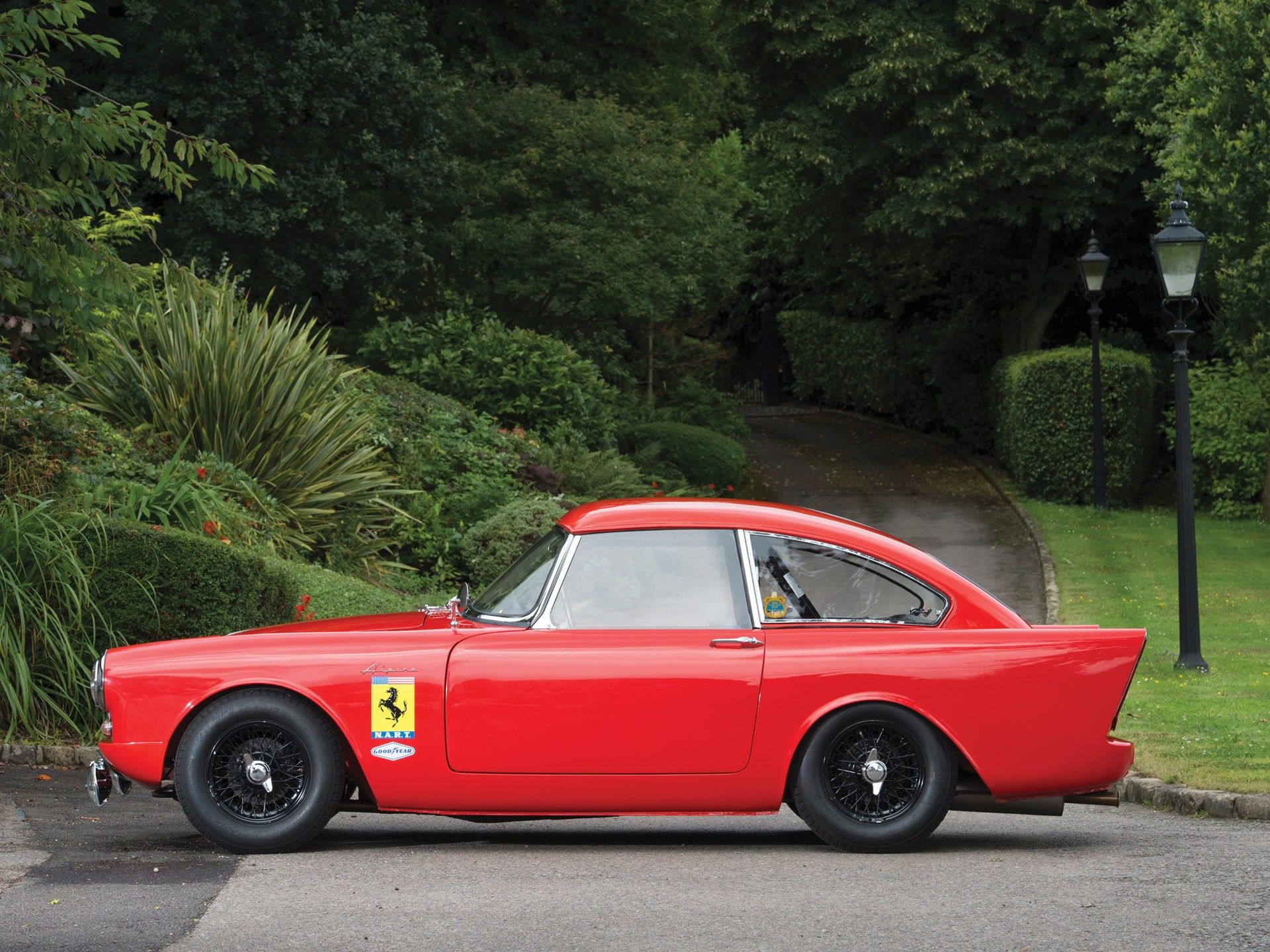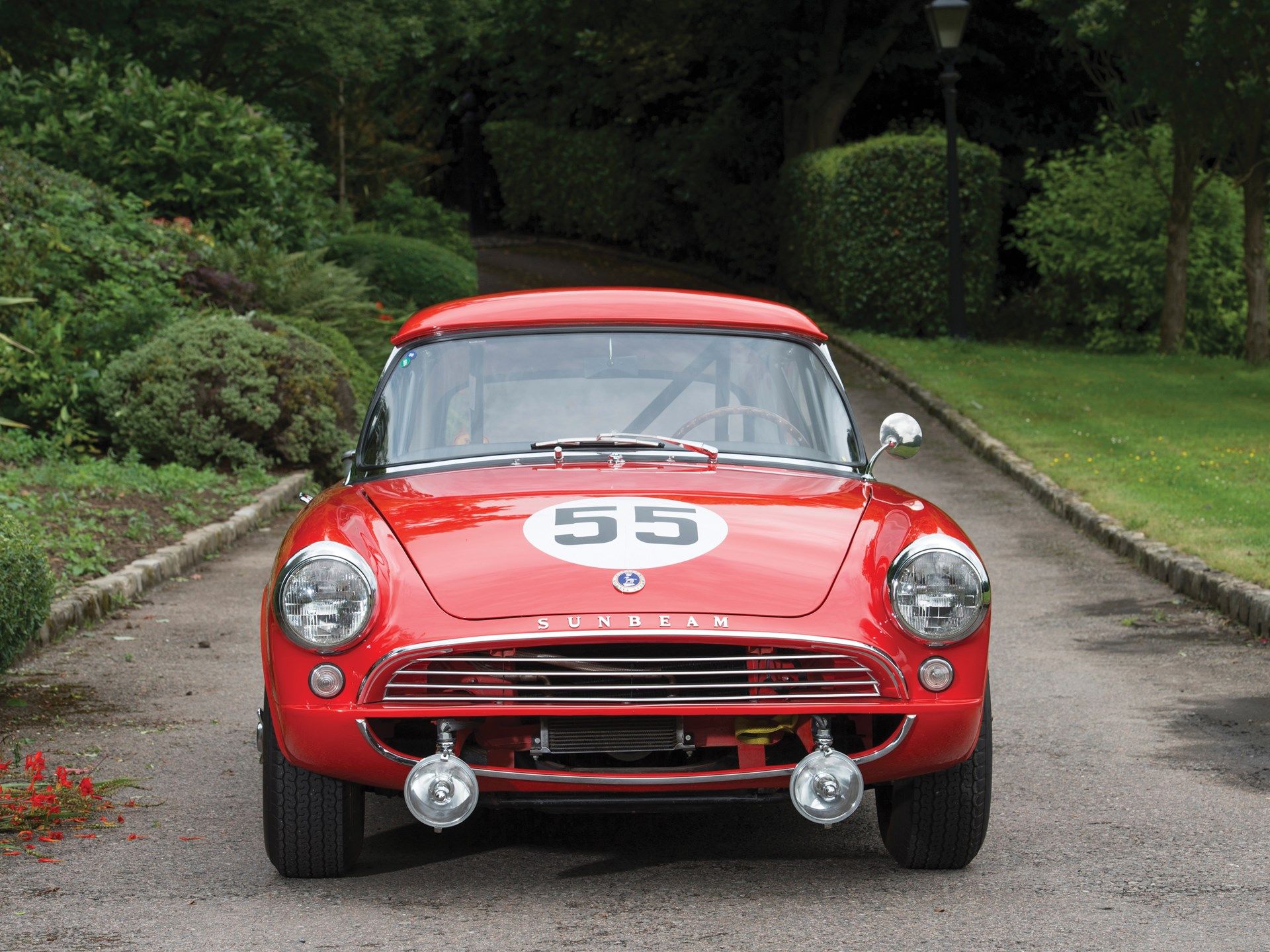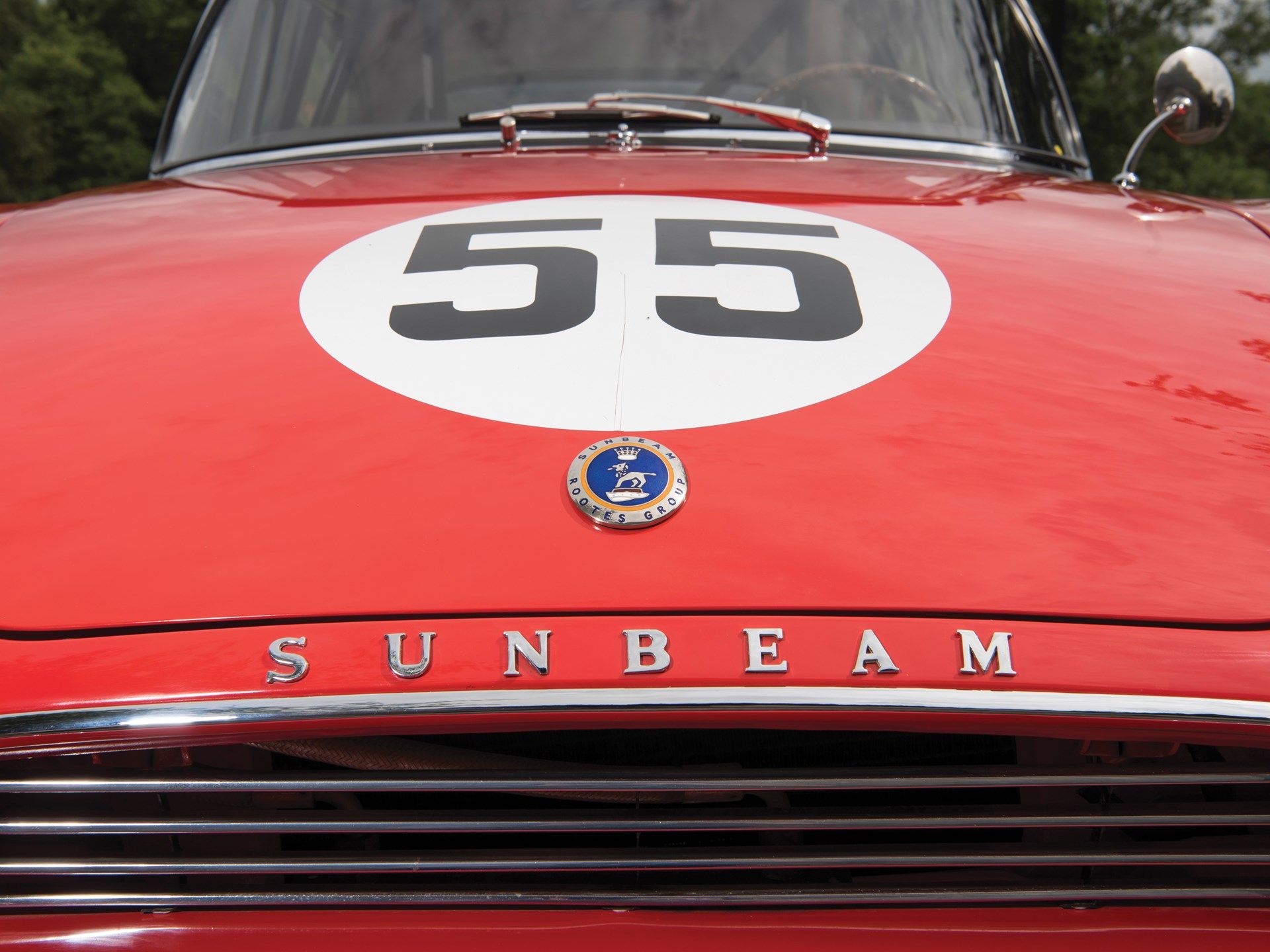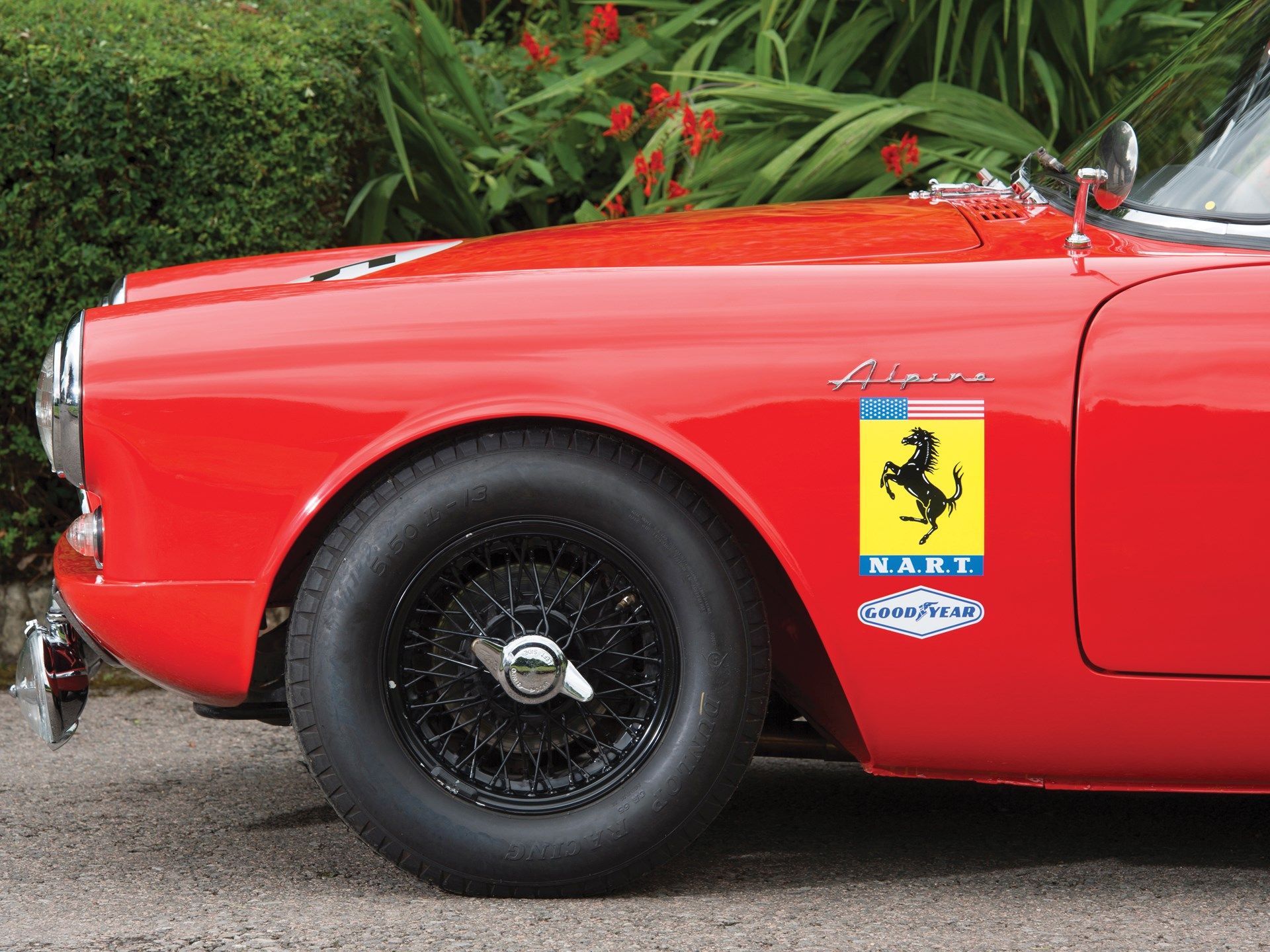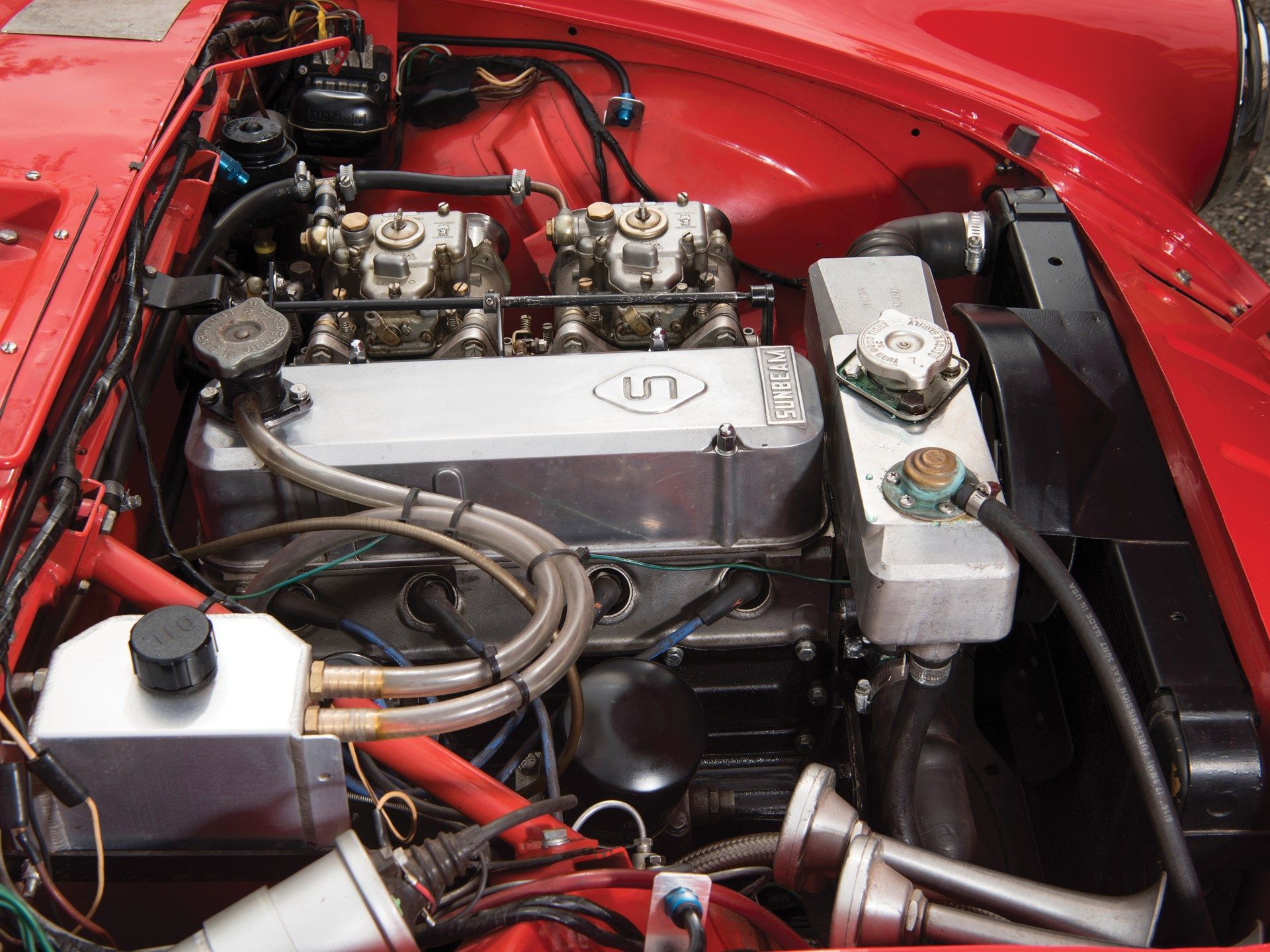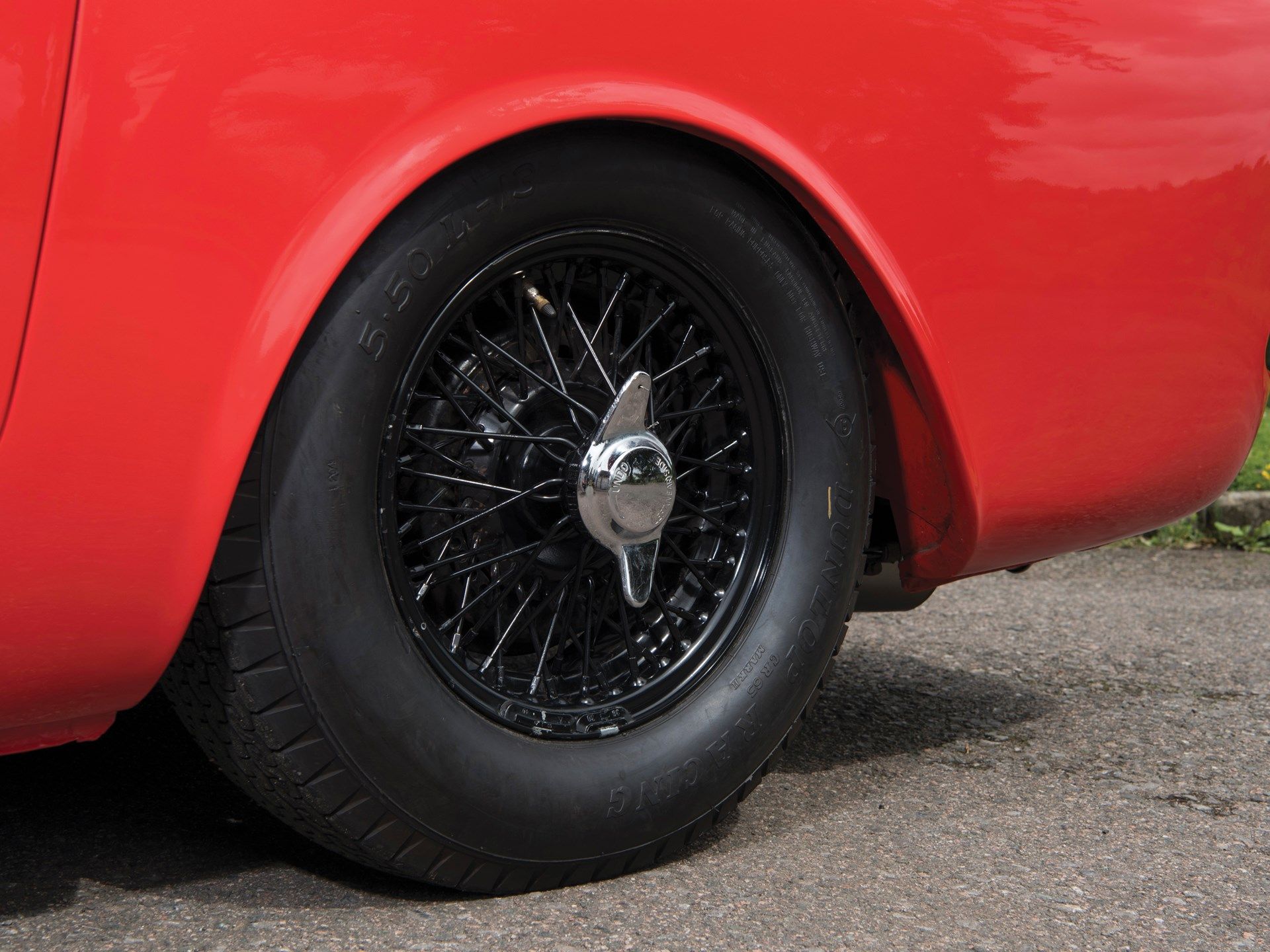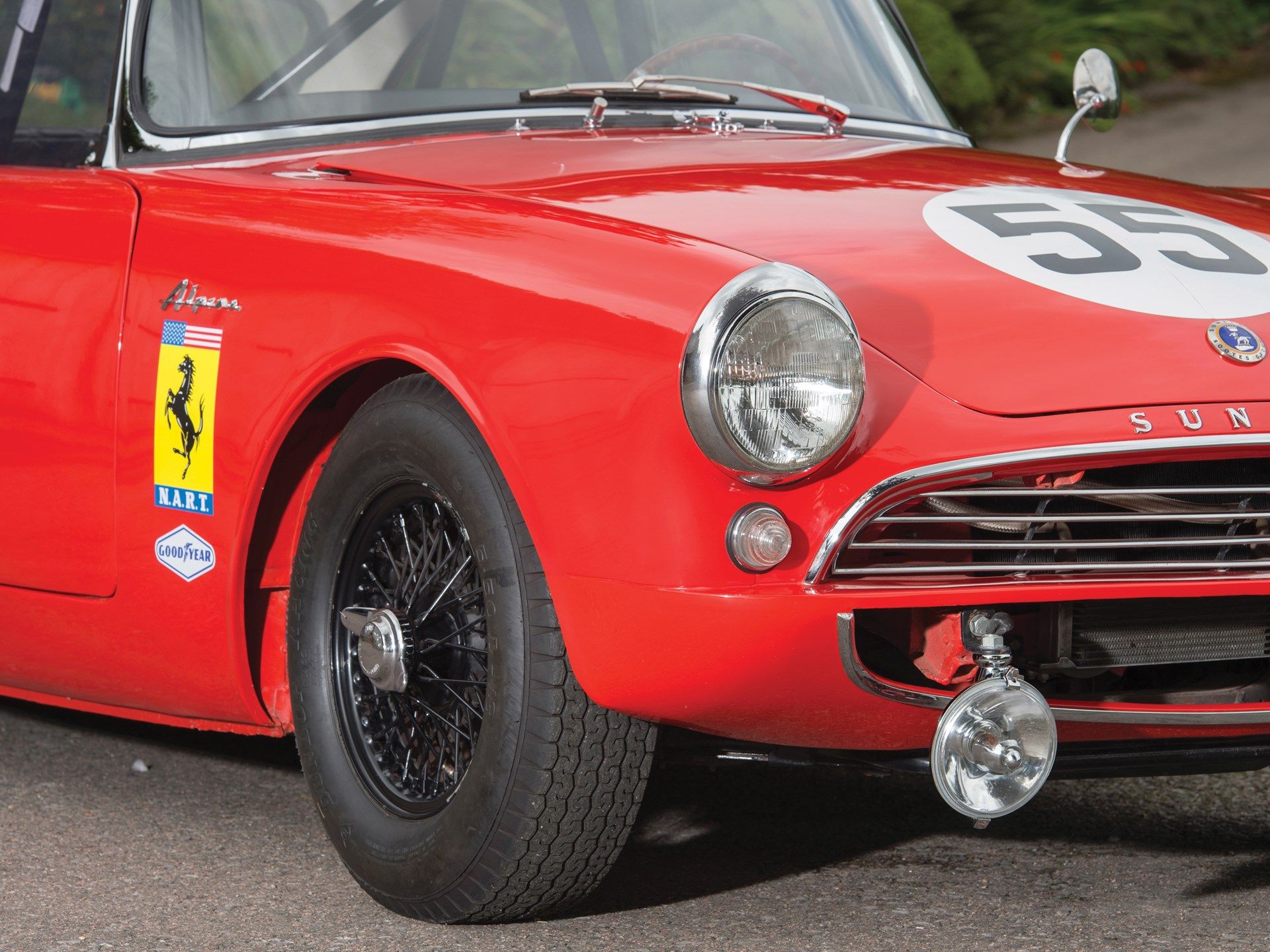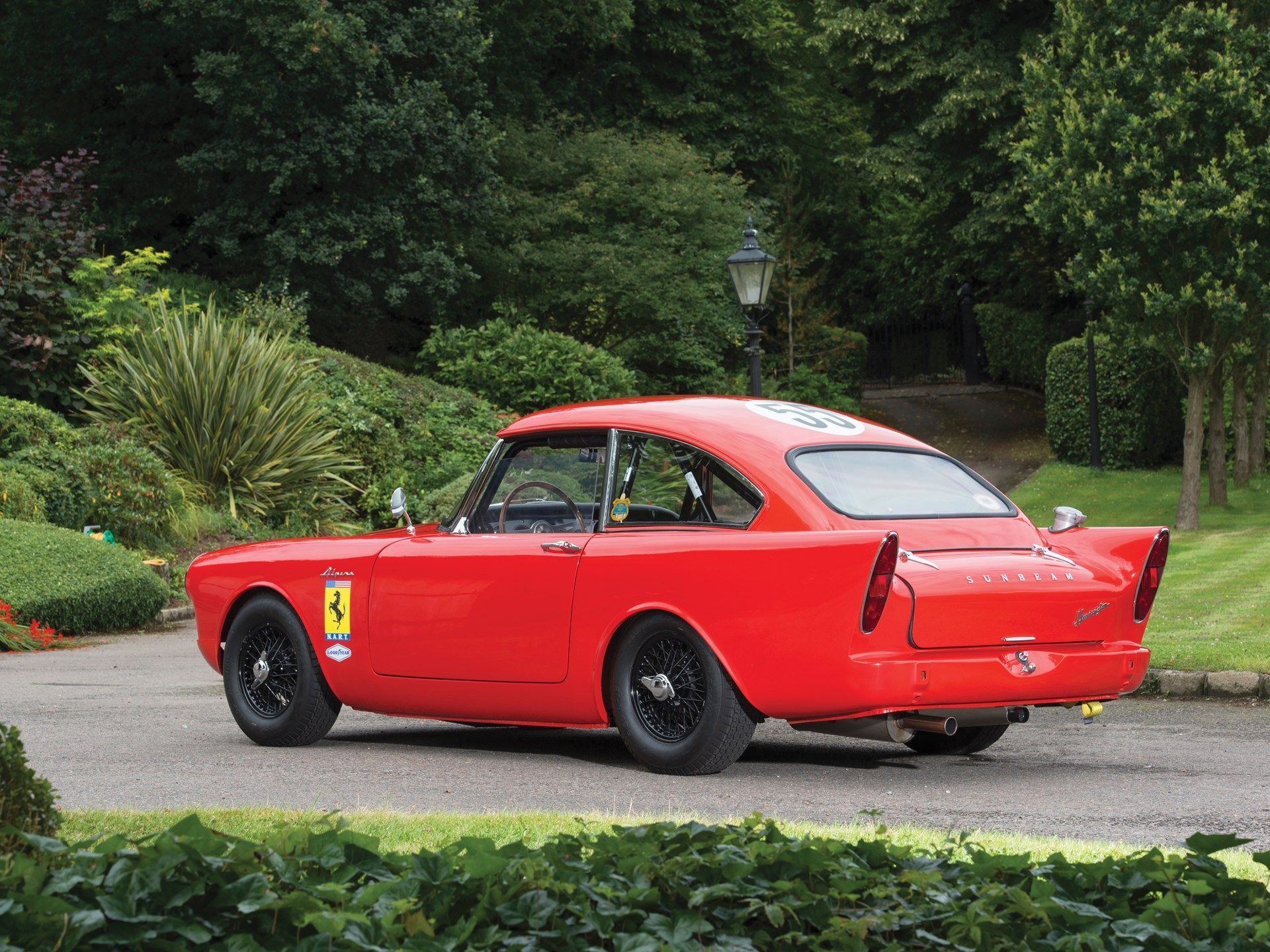An old friend of the public automotive auction scene is back for another go. The Sunbeam Alpine was an interesting yet underrated British sports car that once raced disguised as a Ferrari. It wasn't some gimmick, just the result of the relationship between famed U.S. Ferrari importer, racer, and team owner Luigi Chinetti and the owner of this particular Sunbeam Harrington Alpine Coupe.
With a 1.6-liter engine developing just 104 horsepower, the Sunbeam Alpine was surely not the car you'd pick if you wanted to go for overall honors in the 12 Hours of Sebring but, due to its low dry weight of just 2,228 pounds and an aerodynamic body, it was tough nut to crack in the lower GT ranks. This example was first run by the factory-backed Rootes team before going through a never-to-be-repeated makeover that saw it repainted in Ferrari Red. This is what we call a sheep in wolf's clothing and you can pick it up during January's RM/Sotheby's Arizona sale!
Almost A Prancing Horse From England
An Italian advertising executive who was a friend of legendary U.S. Ferrari importer Luigi Chinetti, an ultra-rare British sports car painted in Ferrari's unmistakable tint of 'Rosso', and the most grueling track in Florida, if not the entire United States: the 12 Hours of Sebring. The three came together in the early '60s to write a story quite like no other.
It's not a story that will ever make it onto the big screen but, then again, you won't ever see a British car sporting Ferrari's crest again either.
The story begins with the Rootes Group. Established as a car sales agency by William and Reginald Rootes back in 1913, Rootes grew from being Britain's biggest car and truck distributor (by 1924) to becoming a full-blown carmaker after purchasing controlling interests in both Hillman and Humber. As the number of brands under the Rootes umbrella grew, so did its power and, at its peak in 1960, the Roots Group owned and operated no less than six plants across the U.K. as well as keeping afloat manufacturing facilities in nine other countries and a large-scale network of parts distributors and repair shops to cater fo each of its brands to which the likes of Sunbeam, Talbot, and Karrier were added.
Its first car was unveiled in 1902 and, in 1905, the Sunbeam Motor Car Company was founded to separate the car-making affair from founder John Marston's original bicycle and motorcycle company. Chief Engineer and, from 1914 onwards, joint Managing Director Louis Coatalen was the main driving force behind most of Sunbeam's technical innovations, especially when it came to drivetrain design.
Coatalen was an avid motorsports fan and pushed for greater involvement of Sunbeam in both land speed record attempts and Grand Prix-style races. Success in motor racing, he reckoned, would boost the sales of the production models and also prove that their underpinnings were thoroughly designed and built - with impressive technical specifications to back it all. Throughout the years of the Great War, Sunbeam also became known as an outstanding builder of aeroplane engines which were also the work of Coatalen.
The success of these designs meant that Marston's death in 1918 didn't coincide with the disappearance of Sunbeam that soldiered on, albeit under new management after being taken over by Darracq, a French car manufacturer that bought Talbot at the same time, in 1920, and incorporated both of them within the S.T.D. Motors Group (Sunbeam Talbot Darracq) - an unfortunate name in hindsight. Shortly after, Sunbeam began making its mark in competition, Sir Henry Segrave famously winning the French and Spanish GPs in 1923 and 1924 behind the wheel of Sunbeam machinery.
The cars were powered by a then-innovatory straight-eight, OHC, aluminum block engine inspired by the work of Peugeot's Ernest Henry who worked alongside Paul Zuccarelli and factory driver Georges Boillot to develop the first modern OHV engine all the way back in 1912. At the same time, the Sunbeam 350HP, renamed 'Blue Bird' by its owner Sir Malcolm Campbell, was breaking land speed record after land speed record.
In 1925, the seemingly dated 'Blue Bird' reached 150.76 mph at Pendine Sands, a speed bettered the year after by Segrave himself who was driving the Sunbeam Tiger powered by a four-liter V-12.
In 1927, Sunbeam's tour de force ended with the also legendary Sunbeam 1000HP, a bullet-shaped purpose-built vehicle powered by two 450-horsepower V-12 Matabele aero engines.
In the light of these illustrious achievements, bolstered by a string of competent and reliable road cars, it may seem surprising that, merely seven years later, Sunbeam went under, crippled beyond repair by the effects of the Great Depression. However, in 1935, Sunbeam was brought back from the dead after it was purchased by the Rootes Group who decided to merge it with Talbot, creating the Talbot-Sunbeam brand. As some of the first companies to experiment with badge engineering, the Rootes group effectively focused on manufacturing Hillman and Humber vehicles that would later be altered and end up sporting the Talbot-Sunbeam badge, for instance.
In 1953, the Rootes Group debuted the Talbot-Sunbeam Alpine, a two-door sports car based on the George Hartwell-built prototype conceived in 1952 for use in rallies. The name, too, harkens back to Talbot-Sunbeam's sterling record in the French Coupes des Alpes rally in the first couple of years of that decade. Between 1953 and 1955, some 3,000 Alpines (S1 and S2 models) were assembled by Thrupp & Maberly, a coachbuilder that'd previously been involved with the construction of Hartwell's one-off drophead coupe. After the discontinuation of the original Alpine, Rootes called for the separation of Talbot and Sunbeam and, recognizing its storied racing past, it was decided that Sunbeam would be the group's sporty brand.
The Alpine nameplate returned in 1959 when a new sports car was launched following in the footsteps of the original model in both design, method, and spirit. What that meant is that manufacturing costs were slashed by way of parts sharing. As a result, the Alpine of 1959 was underpinned by a short-wheelbase Husky chassis teamed up with a slightly improved iteration of the Rapier's drivetrain. However, the Alpine was not an outdated car from the outset as it shared nothing with the '53 model. In fact, the steel monocoque supported by cruciform box-section frames fore and aft was quite avant-garde at the time. The design was completed internally by Rootes with tall tail fins and a frowning grille in the front guarded by the tall fenders featuring a single light cluster each.
As a car destined for export markets too, the 1959 Alpine's styling was undoubtedly influenced by the Ford Thunderbird among others.
In 1960, the Alpine S2 arrived with the 1.6-liter 80 horsepower mill. This model would end up being the foundation for Sunbeam's Le Mans 'onslaught' in 1961.
A pair of cars were sent to France in the summer of '61 to tackle the famous endurance race, one that Sunbeam had almost won in its previous life, all the way back in 1925 when the 3.0-liter Super Sports, the first production twin-cam car ever produced, finished second overall. Now, however, all that Sunbeam could hope for was to stay in touch with the fastest cars in the GT 1.6-liter class and go for the Index of Thermal Efficiency Trophy. The most efficient car at the end of the 24-hour race (that finished with the highest average speed while using the least amount of fuel for its weight coefficient) would win this award.
Of the two cars, one was almost bone-stock (No. 35 shared by Paddy Hopkirk and Peter Jopp) and the other featured an aerodynamic coupe silhouette. This was the Alpine Harrington Coupe driven by Peter Procter and Peter Harper, both Le Mans debutants. The Harrington Coupe, as the name suggests, was created by Thomas Harrington Ltd., a British coach building company whose longstanding ties with Rootes (Harrington acted as sales agents for Rootes) made them the ideal candidate for the job of transforming the open-top Alpine into a coupe. That and Harrington's experience with fiberglass, the material of choice for the bespoke fixed roof applied to the Alpine.
With the roof in place and its reliability confirmed by a twice-around-the-clock endurance test at MIRA's proving grounds, the No. 34 factory-backed Alpine successfully finished the 24 Hours of Le Mans in 16th place, second in class and first in the Index of Thermal Efficiency.
The Harrington cars differed in a number of areas from a standard Alpine, the roof notwithstanding. The chassis was, for instance, strengthened and a new rear bulkhead was fitted to hold the roof and the curtailed trunk lid. The engine was modified by George Hartwell whose Stage III upgrades included re-profiled and polished ports, a high compression (10.2:1) head and twin-choke 40 DCOE Weber carbs along with a high-lift cam, and stronger valve springs.
The power was sent to the rear wheels via a four-speed manual transmission with Laycock overdrive fitted with a lightweight flywheel and racing clutch. 9.5-inch Girling discs were outfitted in the front with drums in the back. Suspension was by swinging links and coil springs in the front and a rigid axle in the rear with semi-elliptical leaf springs.
The Alpine first appeared at the 196112 Hours of Sebring where it didn't fare too badly. The Works cars that year, as well as the one entered by Jack Brabham's team, all sported hardtops instead of the fixed-head coupe setup by Harrington that was still in the works. Italian Filippo Theodoli too had an Alpine but his was powered by the dismal 1.5-liter mill. A marquess, Theodoli had relocated to Boston, Massachusetts, in 1948 and was funding his passion for racing with the money earned as an account executive for the Gardner Advertising Agency, the one looking after the accounts of both Ferrari and Alitalia at the time.
Hearing about the Harrington-bodied coupe, he duly ordered one and flew to Britain personally to pick it up. Fitted with the S3 Hartwell engine, Theodoli's car was completed in early June of 1961, merely days before Sunbeam's victory in the 24 Hours of Le Mans. As the only LHD Alpine Harrington Coupe of the first 110 cars built, Theodoli's car can be considered an oddity. Due to his status as a well-regarded Sunbeam customer, the Italian's car was entered in the 1962 12 Hours of Sebring with backing from Rootes. Partnered by Freddie Barrette, just like in '61, Theodoli finished 33rd overall, towards the tail end of the GT 1.6-liter category.
Following this outing, Theodoli went on to race in the Vineland 4 Hours and the Double 400 at Bridgehampton (he entered the Alpine in the first 400-kilometer race, the one for 2.0-liter GT cars, finishing 13th overall). Thereafter, Theodoli parked his Alpine for the winter months but returned at Sebring in 1963. For this race, the car retained its red paint but gained a pair of N.A.R.T. logos aft of the front wheels, an honor otherwise bestowed only to the cars entered by Luigi Chinetti - which were (almost) always Ferraris as the 1949 24 Hours of Le Mans winner was the East Coast Ferrari importer at the time.
You see, through his work, Theodoli became friends with Chinetti, the man who entered the last Ferrari to win at Le Mans merely two years down the line. As a result of their relationship, Chinetti agreed to have his mechanics look after the Alpine and park it next to the N.A.R.T. Ferraris (and a stray OSCA - again, not always Ferraris).
N.A.R.T. entered four Ferraris that year including one 330 TRI/LM for Pedro Rodriguez and Graham Hill (that finished third overall, Rodriguez coming off a much-disputed victory earlier in the year in the Daytona 3 Hours), one Dino 268 SP for John Fulp and Harry Heuer (this was retired from the race due to suspension failure), and a pair of 250 GTOs. The No. 28 Jo Bonnier/John Cannon team finished 13th while the No. 32 Charlie Hayes/Doug Thiem pairing came home 18th, 30 laps behind the leader and 24 laps in arrears of the class-winning No. 24 250 GTO entered by John Mecum Jr., and driven by Roger Penske and Augie Pabst.
The Alpine, meanwhile, trotted along to finish 36th overall and fourth in the GT 1.6-liter class, bettering N.A.R.T.'s OSCA despite having to make numerous stops caused by a leaking fuel filler. William Kneeland was Theodoli's team-mate this time around and, while Theodoli would race again at Sebring, this would be his last participation in a Sunbeam. After leaving Theodoli's ownership, the car ended up in the hands of Bob Avery who returned to road specification, removing the 40-gallon racing tank in the process.
Following Avery's death, the car was seen a number of times at auction - on eBay in 2013 and at RM/Sotheby's London sale in 2016. Six years ago, the car was advertised for just $26,000 (opening bid) but it's bound to fetch a lot more in January when it'll be offered without reserve during the Arizona sale.

